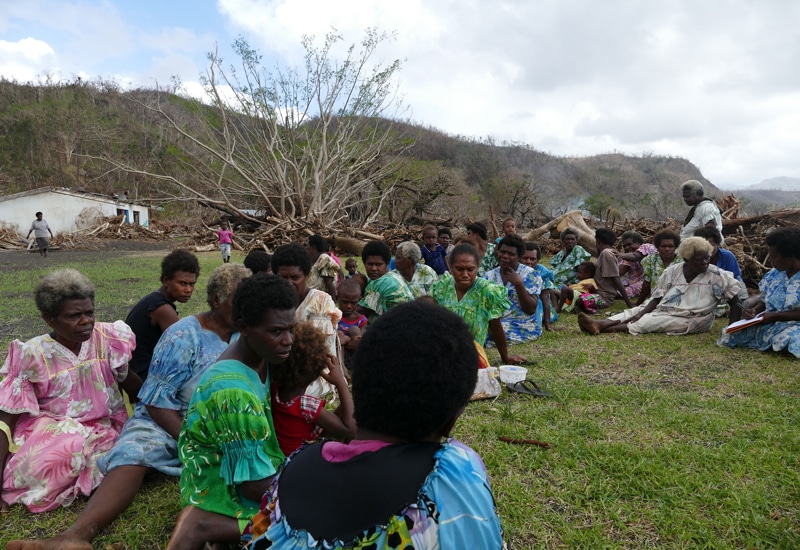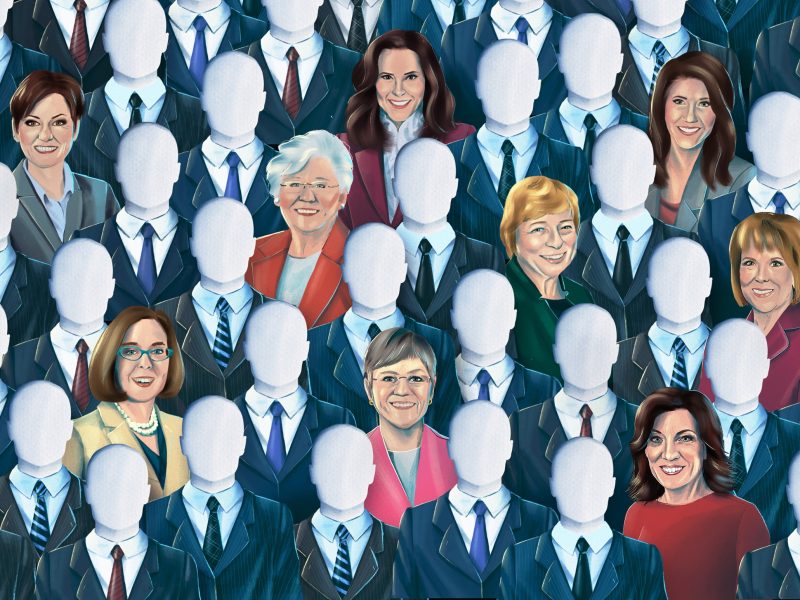
NEW YORK (WOMENSENEWS)—In the warning period before Cyclone Pam struck Vanuatu in March 2015, Mary Jack helped neighbors on her home island of Tanna by reinforcing roofs with panaudu leaves and sandbags.
But the cyclone turned out to be one of the strongest storms to ever hit the small South Pacific island nation. With winds upwards of 150 miles an hour, it left 70 percent of Vanuatu’s 277,000 population displaced.
Jack said she and other women were confused and overwhelmed by the loss of their loved ones, their homes, their gardens, pretty much everything. “But we refused to be victims or to be silent.”
Jack is one of countless women who are first responders to humanitarian crises, helping families and communities to survive.
But what often prepares women to become first responders – their traditional roles as caregivers – is a cultural hurdle that keeps them in non-decision making roles.
After Cyclone Pam wreaked havoc in Vanuatu, Jack launched Women I Tok Tok Toketa, or Women Talk Together, a forum with more than 4,000 women dedicated to women’s rights and their involvement in disaster relief.
But what about planning and preparing for the next disaster? Often the people who play those formal roles are decided by lawmakers. And in Vanuatu women are actively discouraged from politics because of their role in the household.
Jack, for instance, tried to win a seat in parliament, but failed. And while campaigning she experienced entrenched opposition from male chiefs and relentless discrimination from men and women alike who thought a woman’s proper place was in the home. She says one man told her “our custom and culture perfectly points out your place – which is to look after the children.”
At the moment, there are no women in the 52-seat parliament, but Vanuatu has proposed to amend the constitution to reserve seats for women.
Scare in Parliament
As caregivers, women are in the position to advise nongovernmental organizations on health care services, water, food and sanitation.
But the situation in Vanuatu is mirrored throughout global parliaments, where women are relatively scarce; less than 25 percent.
And that lack of political representation is reflected in humanitarian responses that often fail to appreciate the importance of women’s existing roles and their capacity as leaders in emergency response.
Few leading humanitarian agencies collect data that is disaggregated by sex. Doing so is a crucial step to addressing the gender disparity in humanitarian action, for without data on gender to inform humanitarian programming women and girls' needs are not fully met.
Another speaker at the same U.N. event was from Liberia and the disaster example in her case was not severe weather. It was the deadly outbreak of Ebola in 2014.
“Informally, we are humanitarian actors,” Joyce Kilikpo, the founder of Public Health Initiative Liberia, an educational organization, told the forum. “However, the platform and the recognition has not been given to us.”
Before the Ebola outbreak, Kilikpo was working with women to help curb the nation’s high maternal mortality rate. As the virus spread across the country, women began contacting Kilikpo with a dilemma: how do they take care of their sick children and relatives when they’ve been told not to touch the infected?
Kilikpo quickly gathered latex gloves, surgical masks and reached out to the nongovernmental organization ActionAid Liberia, which was able to provide resources and help Kilikpo engage with 119 communities in four counties. The network of women with whom Kilikpo was working expanded, allowing her to establish an Ebola community engagement task force that educated women on how the virus is spread and how to treat the infected.
‘Also Leaders'
“This was only possible with support to women organizations because someone believed in what we were doing,” said Kilikpo. “And that goes to show that as women, we have what it takes to lead. We are not just victims but we are also leaders.”
It may seem odd that a woman from a country that elected Ellen Johnson Sirleaf as Africa’s first female president should feel the need to prove women’s leadership abilities.
But in the context of humanitarian disaster, the need for women to gain better recognition for their leadership capacities is widely noted.
“When we talk about first responders the narrative gives so much focus on vulnerability, so much,” said Nyaradzayi Gumbonzvanda, chair of ActionAid International, in reference to high levels of gender-based violence experienced by women and girls in crisis settings. “Yes, yes, we sometimes struggle, but also the narrative of leadership is not sufficiently articulated. We are leading and finding solutions in responding to the crisis.”
Of the 125 million people in need of humanitarian assistance worldwide, more than 75 percent are women and children according to the U.N.
To ensure that the needs of women and girls are appropriately addressed, Kyung-wha Kang, assistant secretary-general and deputy emergency relief coordinator of the Office for the Coordination of Humanitarian Affairs, stressed the importance of advocating for support and resources so women can continue to make lasting impacts in humanitarian response.
“We know that women and girls are disproportionately affected by crisis and conflicts, which by their nature heightens pre-existing vulnerabilities,” said Kang. “But if we succeed, if we do our work right, we meet their specific needs, we empower them, we will be able to assist in rewriting the life stories of these women whose lives have been destroyed by crisis.”


